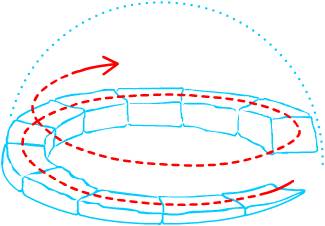 No matter if we consider past or contemporary self-constructions, those architecture without architects embody a kind of expression of an individual or associative power in the trespassing or not of a local legislation. Their essential motivation often has a vital statute which answer thus more to needs than desires. These needs is then materialized into a shape and a space.
No matter if we consider past or contemporary self-constructions, those architecture without architects embody a kind of expression of an individual or associative power in the trespassing or not of a local legislation. Their essential motivation often has a vital statute which answer thus more to needs than desires. These needs is then materialized into a shape and a space.No forward planning for self-constructed districts brings to the city a disinclination which can not be harmful for democracy. In fact, those buildings' construction and life are happening thanks to a local negotiation between people directly concerned by them. Architecture is thus the product of this neighbourhood negotiation. Result is an organic network of buildings as a urban fabric uncontrollable by any human authority.

















 you want to see up until you get the shape you wanted...
you want to see up until you get the shape you wanted...






























